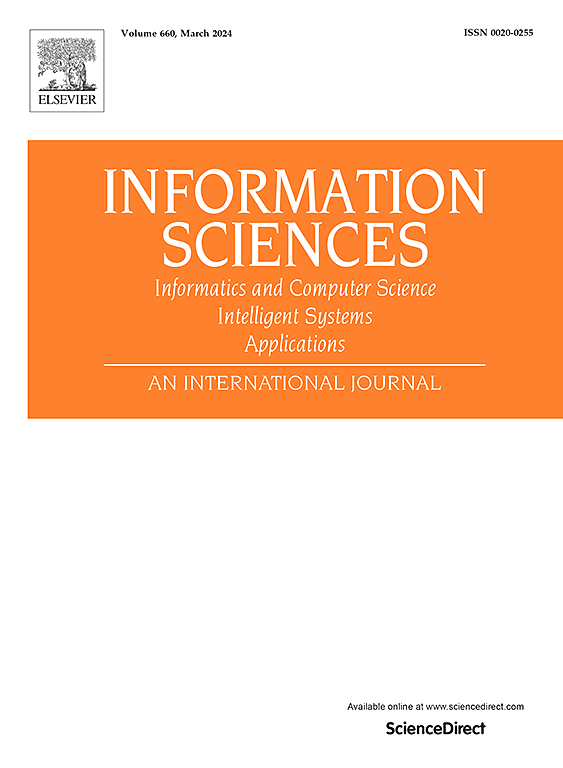Achieving fair medical image segmentation in foundation models with adversarial visual prompt tuning
IF 6.8
1区 计算机科学
0 COMPUTER SCIENCE, INFORMATION SYSTEMS
引用次数: 0
Abstract
Recent advances in deep learning have significantly enhanced medical image analysis capabilities. Medical image segmentation, a critical application in this domain, enables precise delineation of anatomical structures and pathological regions, substantially supporting clinical decision-making. However, current segmentation methods primarily optimize for overall performance without considering disparities across demographic groups, raising important fairness concerns. To address this gap, we propose Adversarial Visual Prompt Tuning (AdvVPT), a parameter-efficient approach that enhances fairness in foundation models for medical image segmentation. AdvVPT introduces trainable visual prompts within the image encoder while keeping the backbone frozen, requiring only 0.812M additional parameters. These prompts are optimized through adversarial training to absorb demographic-specific biased information from image embeddings, achieved by maximizing prediction errors for sensitive attributes and increasing embedding distances between visual prompts and image features. Experimental evaluation on the Harvard-FairSeg dataset demonstrates that AdvVPT achieves state-of-the-art fairness performance across multiple demographic attributes. For racial fairness, AdvVPT achieves an ES-Dice score of 0.8996 and an ES-IoU score of 0.8222 on optic cup segmentation, substantially outperforming existing methods. For gender fairness using the SAT backbone, AdvVPT achieves an ES-Dice of 0.9297 and ES-IoU of 0.8614, demonstrating both superior performance and improved balance between male and female subgroups.
基于对抗性视觉提示调优的基础模型实现公平的医学图像分割
深度学习的最新进展显著增强了医学图像分析能力。医学图像分割是该领域的一个关键应用,它能够精确描绘解剖结构和病理区域,极大地支持临床决策。然而,目前的分割方法主要是针对整体性能进行优化,而没有考虑人口群体之间的差异,这引起了重要的公平性问题。为了解决这一差距,我们提出了对抗视觉提示调整(AdvVPT),这是一种参数高效的方法,可以提高医学图像分割基础模型的公平性。AdvVPT在图像编码器中引入可训练的视觉提示,同时保持主干冻结,只需要0.812M的额外参数。这些提示通过对抗性训练进行优化,以从图像嵌入中吸收特定于人口统计学的偏见信息,通过最大化敏感属性的预测误差和增加视觉提示与图像特征之间的嵌入距离来实现。在Harvard-FairSeg数据集上的实验评估表明,AdvVPT在多个人口统计属性上实现了最先进的公平性能。对于种族公平,AdvVPT在光学杯分割上的ES-Dice得分为0.8996,ES-IoU得分为0.8222,大大优于现有方法。对于使用SAT主干的性别公平,AdvVPT实现了0.9297的ES-Dice和0.8614的ES-IoU,显示了优越的性能和改善的男女子群体之间的平衡。
本文章由计算机程序翻译,如有差异,请以英文原文为准。
求助全文
约1分钟内获得全文
求助全文
来源期刊

Information Sciences
工程技术-计算机:信息系统
CiteScore
14.00
自引率
17.30%
发文量
1322
审稿时长
10.4 months
期刊介绍:
Informatics and Computer Science Intelligent Systems Applications is an esteemed international journal that focuses on publishing original and creative research findings in the field of information sciences. We also feature a limited number of timely tutorial and surveying contributions.
Our journal aims to cater to a diverse audience, including researchers, developers, managers, strategic planners, graduate students, and anyone interested in staying up-to-date with cutting-edge research in information science, knowledge engineering, and intelligent systems. While readers are expected to share a common interest in information science, they come from varying backgrounds such as engineering, mathematics, statistics, physics, computer science, cell biology, molecular biology, management science, cognitive science, neurobiology, behavioral sciences, and biochemistry.
 求助内容:
求助内容: 应助结果提醒方式:
应助结果提醒方式:


